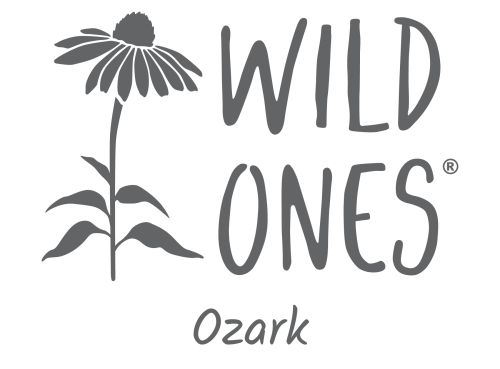by: Camille Newell.
Why Leave the Leaves?
Leaving leaves is a “wild”-ly debated topic in horticulture and landscape forums, as well as in everyday conversations with friends and neighbors. Planting native plants and leaving the leaves are two sides of the same coin. If a garden or lawn that facilitates biodiverse habitat sounds interesting, intentional leaf management and providing winter interest are the first steps. Many beneficial insects overwinter in the stems of native perennials, while others insulate and stay protected in the leaves. Birds benefit from wildflower seeds all winter long. It is recommended to wait to cut back and clean up your garden until temperatures are in the 50’s, as many of the shelter-seeking pollinators you love (butterflies, moths, bumblebees, roly-polys and beetles) will finally start to emerge. In this case, the earth is providing us time to relax. Let the leaves rest in and around your perennials, and nature will take its course as we all embark through winter.
What to Do with Your Leaves & Garden?
Every space is different, and many of us will have to take multi-strategy approaches when it comes to lawns and gardens in neighborhoods and urban areas. Strategies are often debated but ultimately, it’s about what works for the space and your commitment to biodiversity. “Primary habitat features used by pollinators and other insects include stems and branches of trees, shrubs, and wildflowers; leaf litter; undisturbed ground; bare ground; dead wood; brush piles and rock piles (Xerces, 2020).” Incorporating these features is just another strategy to have a direct influence on local pollinators. It is ideal to move your leaves from lawn areas into wooded areas or under large established native trees. This practice stems from the idea of the soft landing, where the space underneath native trees serve as a resting place for our native species. Specifically, “many moth and butterfly caterpillars spend their next life cycle stage (pupae) in the leaf litter or in the soil below the tree” (Holm, 2020).

Every species is different but in the case of native bees, “female bees find cut or naturally occurring open stems,” lay eggs and nest within the stems. The bees hibernate in stems during the winter and cavity nesting bee larva stay in stems for an entire year (Xerces Society, 2020). Leaving your stems and leaves for as long as possible will have the largest net benefit for future pollinator generations. Another example of a late bloomer is fireflies, which in some cases wait to emerge from leaves in June!

If you are concerned about new growth or aesthetics, perennials will have no issues growing within older stems and the new shoots will mask the old stems in no time. When we are under the parameters of HOAs, there are options that are still more ecological than hauling or burning. Leaving the leaves will not kill a lawn if done properly; if anything, it will add nutrients back into the soil and make lawns healthier. If enough leaves exist, let them be your bounty and become your own personal source of mulch or leave the leaves and increase your butterfly and pollinator populations! If your leaves end up at the compost center, this is still a greener option than burning them. The City of Fayetteville, Arkansas, compost center makes leaf mulch/mold from the leaves and debris collected around the city. Some neighbors prefer to compost their own leaves in compost rings you can DIY.
In Short
There are many options for dealing with leaves. The easiest tip is wait to cut back your garden, leaving hollowed and pithy stems taller and using leaves as soft landings under trees. Last tip, and your neighbors will thank you, is to rake the leaves instead of using a leaf blower. If a leaf blower is totally required, there are many electric ones on the market. I hope that in this 2024 season, it feels easier to choose an ecological method for leaves that works for you!

References and Resources
Foltz Jordan, Sarah. “Nesting & Overwintering Habitat.” Nesting & Overwintering Habitat
| Xerces Society, Xerces Society for Invertebrate Conservation, 2020,
xerces.org/publications/fact-sheets/nesting-overwintering-habitat.
Holm, Heather. “Soft Landings.” Bee and Pollinator Books by Heather Holm, Wild Ones,
Heather Holm & Native Greening, 2020,
www.pollinatorsnativeplants.com/softlandings.html.
Beck, Barbara. Overwintering for Beneficial Insects , Bird Town Pennsylvania, 15 Oct.
2022, birdtownpa.org/overwintering-for-beneficial-insects/.
Allyson Chiu. Why you should be lazy and leave your leaves in the yard, The Washington
Post, October 2023, https://www.washingtonpost.com/climate-solutions/2023/10/14/raking-leaves-yard-fall-environment
